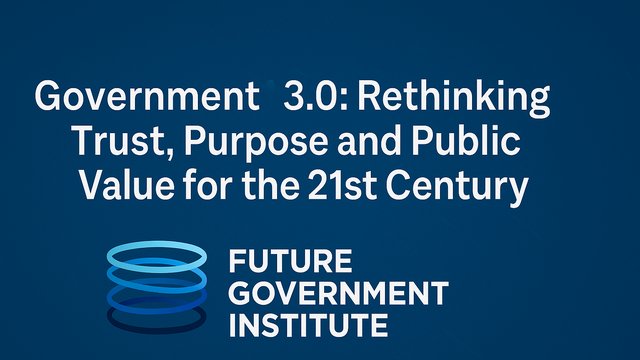
The panel session, "Navigating Tomorrow: The Impact of AI on Government Technology and Strategic Pathways Forward," brought together leaders in the field to discuss the transformative potential of Artificial Intelligence (AI) in government services. Moderated by Tarek Emara, Ontario Public Sector Leader at PwC, the discussion featured Alex Coleman, Assistant Deputy Minister and Chief Information Officer, Children, Youth, Social Services; Melissa Kittmer, Assistant Deputy Minister of the Strategic Policy Division in Policy, Archives and Data, Ministry of Public and Business Service Delivery and Procurement; Dan Wilkins, Chief Information Security Officer, Arizona Department of Economic Security; and Doneyli De Jesus, Principal AI Specialist at Snowflake. Together, they explored the opportunities and challenges AI presents, emphasizing the need for strategic planning, ethical frameworks, and workforce development to successfully integrate AI into government systems.
The Promise of AI in Government Services
AI offers governments the ability to process vast amounts of data, turning routine interactions into opportunities for deeper analysis and improved efficiency. Wilkins shared how AI reduced the processing time for a government service from 40 days to 18 days by analyzing data to identify inefficiencies. This example illustrates how AI can not only provide answers to citizens' questions but also help governments understand the root causes of frequent issues, leading to systemic improvements.
"AI has the power to transform routine interactions into opportunities for real change.” — Wilkins
Key Challenges of AI Integration
While AI's potential is undeniable, governments face several challenges when attempting to integrate it into existing infrastructure. One major issue is the legacy systems that many governments still rely on. According to De Jesus, AI cannot simply be applied to outdated systems without yielding suboptimal results. Governments must first address infrastructure limitations and ensure that data is centralized, accessible, and secure.
Security and privacy also remain critical concerns. Government data often includes sensitive personal information, making it essential to maintain strict data residency rules and safeguard against breaches. This is particularly relevant for Canadian governments, where privacy regulations require data to be stored on national soil.
Another challenge is the cost associated with implementing AI technologies. As Wilkins pointed out, even seemingly simple AI applications, such as art generation in marketing, can come with hidden costs, including processing power and data storage. These costs need to be carefully considered to avoid financial pitfalls.
“Infrastructure and security must evolve alongside AI for it to be truly effective.” — De Jesus
Ethical and Transparent AI Use
The ethical use of AI in government is paramount. Kittmer highlighted that Ontario has taken significant steps to ensure responsible AI use through its Trustworthy AI Framework, which outlines strategic priorities such as transparency, fairness, and accountability. These guidelines help ensure that AI is used to improve public services while safeguarding citizens' privacy and ensuring that the technology is applied ethically.
One of the key principles of the framework is "No AI in Secret," meaning that citizens must be informed when AI is being used, and governments must provide mechanisms for public inquiries. This transparency is crucial for building public trust and ensuring that AI is seen as a tool for good rather than something to fear.
Overcoming Resistance to AI Adoption
Despite the clear benefits, there is often resistance to adopting AI in government, driven by fear of the unknown and concerns about job security. As Coleman noted, AI is not a solution to every problem, and governments must approach its implementation with a clear purpose. This involves not only identifying where AI can genuinely add value but also educating staff about its benefits and ensuring they have the necessary training to use it effectively.
One strategy for overcoming resistance is to start with "quick wins"—projects that demonstrate the tangible benefits of AI without overwhelming agencies. For example, automating mundane tasks in healthcare can free up time for doctors and nurses, delivering value to both citizens and public servants while reducing the perceived risk of AI adoption.
“Transparency and education are key to overcoming resistance and building trust in AI’s capabilities.” — Coleman
AI in Decision-Making and Policy Development
AI can also play a significant role in supporting government decision-making and policy development. AI tools can analyze vast datasets, create visualizations, and even draft documents, providing valuable insights that inform policy decisions. In Ontario, AI is being used for predictive soil mapping and summarizing medical appointments, among other applications. These use cases demonstrate the potential for AI to enhance the efficiency and effectiveness of government operations.
However, as Kittmer stressed, all AI applications must be governed by responsible use frameworks that consider the sensitivity of the data and the potential risks involved. Governments must strike a balance between innovation and trustworthiness, ensuring that AI is used to benefit citizens without compromising their privacy or security.
Building a Skilled Workforce for AI
As governments look to the future, building a skilled workforce capable of managing and deploying AI technologies will be crucial. Coleman emphasized the need for resilience and adaptability in the face of rapid technological change. AI is just one of many emerging technologies, and governments must prepare their employees to adapt to new tools and processes continually.
One way to achieve this is through partnerships with universities, which can help bring fresh talent into the public sector while also providing opportunities for existing staff to upskill. By fostering a culture of continuous learning and collaboration, governments can ensure that their workforce is equipped to handle the challenges and opportunities that AI presents.
Conclusion
AI has the potential to revolutionize government services, but its successful integration requires careful planning, robust infrastructure, and a commitment to ethical use. By addressing the challenges of legacy systems, ensuring transparency, and investing in workforce development, governments can harness the power of AI to improve public services and better serve their citizens. The panelists made it clear that AI is not a magic bullet, but when applied thoughtfully, it can be a powerful tool for positive change.

































